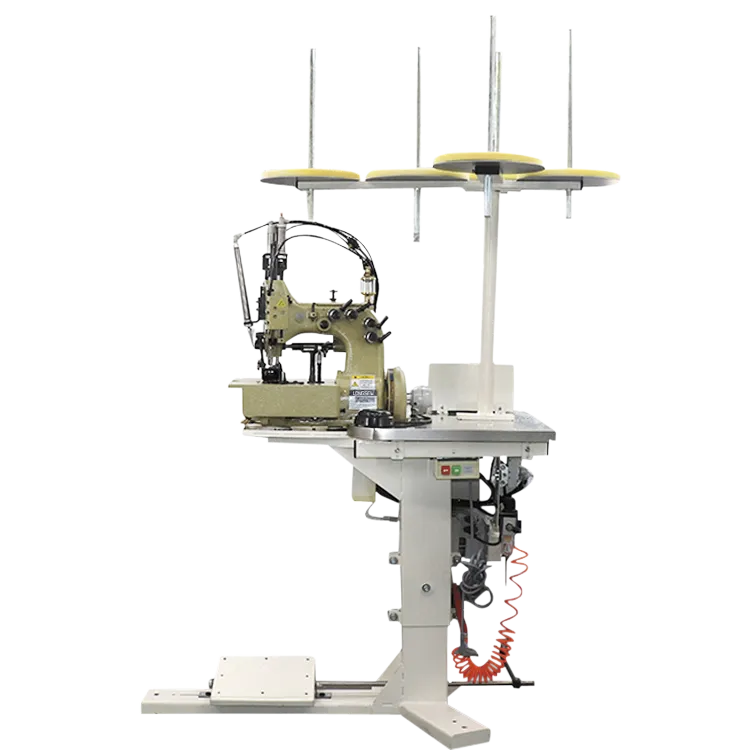High-Performance Cylinder Bed Sewing Machines for Industrial Applications
Understanding Industrial Cylinder Sewing Machines
Industrial cylinder sewing machines are vital tools in the textile manufacturing industry, designed for high-efficiency sewing applications. Unlike conventional flatbed machines, cylinder bed sewing machines feature a cylindrical working surface that allows for easier handling of tubular fabrics, such as sleeves, cuffs, and pant legs. This unique design enhances the efficiency and precision of the sewing process, making it an essential piece of equipment for many garment production systems.
Key Features
One of the primary characteristics of industrial cylinder sewing machines is their specialized bed shape. The cylindrical bed allows fabric to be fed seamlessly around the machine, which is particularly advantageous for garments with circular or tubular components. This enables operators to sew difficult-to-reach areas without the hassle of fabric manipulation required by flatbed machines.
Moreover, industrial cylinder sewing machines come equipped with powerful motors and enhanced feed mechanisms, ensuring they can handle various fabric types and thicknesses. These machines are generally constructed from durable materials, making them well-suited for high-volume production environments. Features such as automatic needle positioners, adjustable presser feet, and various stitching patterns further contribute to the versatility of these machines.
Applications
The applications of industrial cylinder sewing machines are vast and varied. They are predominantly used in the production of garments such as t-shirts, pants, jackets, and sportswear. Additionally, these machines are invaluable in specialized industries such as automotive upholstery, leather goods manufacturing, and even in the production of safety equipment, where precision and quality are paramount.
industrial cylinder sewing machine

In garment factories, the ability to sew tubular items efficiently reduces production time and labor costs, ultimately increasing output. The maintenance of consistent stitch quality is crucial for maintaining the standard of finished products, and cylinder machines excel in this regard.
Advantages
One of the significant advantages of using an industrial cylinder sewing machine is its increased productivity. Their design allows for quicker sewing times on tubular items compared to traditional flatbed models. Furthermore, the layout encourages ergonomic practices; operators can work more comfortably and efficiently due to the free movement of fabric around the cylinder.
Additionally, these machines require less fabric handling, which contributes to a more streamlined workflow. This decrease in handling not only speeds up production but also reduces fabric waste, enhancing sustainability in manufacturing processes.
Conclusion
In summary, industrial cylinder sewing machines are a cornerstone of modern textile production, providing unmatched efficiency and precision for sewing tubular garments. Their unique design, coupled with robust features and diverse applications, ensures they remain a preferred choice among manufacturers. As the garment industry continues to evolve, the importance of these machines will only grow, paving the way for innovations that further enhance their capabilities and performance. For businesses aiming to optimize their production processes, investing in industrial cylinder sewing machines is a strategic move that yields long-term benefits in both speed and quality.
-
Zigzag Sewing MachineNewsMay.12,2025
-
Single Needle Sewing MachineNewsMay.12,2025
-
Overlock Sewing Machine PriceNewsMay.12,2025
-
Heavy Duty Industrial Sewing MachineNewsMay.12,2025
-
FIBC Sewing MachineNewsMay.12,2025
-
Cylinder Bed Sewing MachineNewsMay.12,2025
-
Revolutionizing Sewing with CNC TechnologyNewsMar.28,2025





























